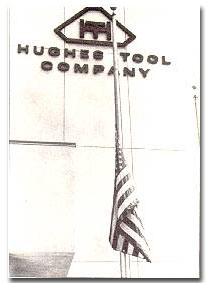OUR LEGACY - Oil Glut and the Economic Downturn
 Houston's manufacturing growth was marked by certain sharp break points such as the Spindletop discovery of 1901 and the national government's investment in petrochemicals and pipelines in the 1940s. A third watershed occurred in 1973-74. A combination of circumstances kept oil and gas prices relatively cheap in the 1960s and early 1970s. Even as domestic production of petroleum lagged behind national consumption, the availability of abundant supplies of crude oil from the Persian gulf, Africa, and Indonesia kept world prices low. Federal regulation of interstate gas also kept these prices extremely low, although national demand was fast closing in on available supplies.
Houston's manufacturing growth was marked by certain sharp break points such as the Spindletop discovery of 1901 and the national government's investment in petrochemicals and pipelines in the 1940s. A third watershed occurred in 1973-74. A combination of circumstances kept oil and gas prices relatively cheap in the 1960s and early 1970s. Even as domestic production of petroleum lagged behind national consumption, the availability of abundant supplies of crude oil from the Persian gulf, Africa, and Indonesia kept world prices low. Federal regulation of interstate gas also kept these prices extremely low, although national demand was fast closing in on available supplies.
The triggering event that changed this pattern was the Yom Kippur war and the ensuing Arab oil embargo of late 1973. Sudden, sharp pressures were put on world oil supplies and emboldened the Organization of Petroleum Exporting Countries (OPEC) to wrestle control of production and pricing decisions from the great western oil companies. Within a few months, world oil prices rose to $12 a barrel, or about four times their midk-1973 level. This steep price increase had profound and largely negative consequences for the economies of western Europe, the U.S., and Japan. Inflation increased, unemployment rose, sever balance of payments problems between nations developed, and there was a worldwide economic slump in 1974 and 1975.
For Houston, however the quadrupling of world crude prices stimulated local industrial/manufacturing activity. The OPEC price increase demonstrated that short-term demand for oil was relatively inelastic, in contrast to demand for automobiles, airplanes, or housing. The 1973-74 fourfold price increase had only modest effects on demand. As prices rose, it became increasingly clear that replacement costs to shift from oil and natural gas (the price of natural gas also began to rise sharply when crude oil became more expensive) to alternative energy sources would be very high. Moreover, even under the best of circumstances such as a transition would take many years. All of this left Houston in a most favored position. While other urban areas had to absorb sharply increased energy costs for their manufacturing plants, Houston suddenly found its prime industrial products were several times more valuable than they had been a couple of years earlier. And there was no lessening of demand for these products, indeed in areas like oil services, demand rose.
Comparing new capital investment in manufacturing between 1967 and 1982 for Houston with the mean for the five largest U.S. urban areas. From 1967 to 1972, with petroleum and natural gas prices declining in constant dollars, annual new investment in local manufacturing was about $500 million, compared with a national urban mean of $600 million in 1967 and $1.1 billion in 1972. In 1974, Houstonís capital investment began to rise rapidly, equaling the big urban areasí average. During a severe recession in 1975, the national mean sagged. Houstonís capital investment, on the other hand, soared to the highest of any area in the country. The 1977 total of $2.6 billion was a half billion dollars more than the next highest urban area (Chicago), and more than a billion dollars above the mean for metropolitan areas.
Several factors helped account for this investment surge. Offshore investments in refineries and petrochemical plants became less attractive in the 1970s, due to the increasing political and economic instability of many foreign sites. Relatively few places in the U.S. had the locational qualities needed for oil/gas-related industrialization: and , in some of these, influential political groups opposed new plant construction. With the price of crude oil and natural gas escalating sharply, large amounts of capital could be raised within the industry, and other funds were readily obtainable from banking institutions.
Houston also took advantage of temporary pricing aberrations in the late 1970s. On one hand, much of Houstonís industrial sector (such as oil-tool companies, well-service firms, and others) was being stimulated by high prices for newly discovered crude. On the other hand, federal regulations kept much of the crude oil and natural gas produced in the U.S.ócalled "old oil"óat relatively low prices compared with the world market. Thus, petrochemical products made in Houston enjoyed a considerable advantage over foreign competition that had to pay higher prices for feedstock's.
This complex pricing arrangement also provided Houston with bargain-rate energy from manufacturing. In 1980, for example, the cost per million BTUs in Houston was $3.51, compared with $4.49 in Detroit, $4.97 in Chicago, $5.44 in Philadelphia, $6.48 in Los Angeles, and $7.06 in New York. Houston is more dependent on the availability of cheap fuel than other manufacturing cities because enormous amounts of energy are consumed in petrochemical and petroleum manufacturing. Compared with their counterparts in other areas, manufacturing firms in Houston use far more fuel. In 1980, for instance, Houstonís manufacturing base used 625.0 trillion BTUs. Pittsburgh, the next largest user, consumed only 310.4 trillion BTUs. New York, which produced four times more VAM than Houston, consumed only 91.6 trillion BTUs in 1980.
Although Houstonís industrial base requires large capital investments and energy, it is not labor intensive. In 1982, for example, 275,000 workers produced $16.946 billion VAM, or $61,554 per worker. In contrast, the mean VAM per production worked in the nationís five largest urban areas was only $41,999, and in the five southern urban areas included in it was just $44,682.42.
A second sharp increase in oil prices occurred in 1979-1980, when the Iraqi-Iranian war disrupted production in the Persian Gulf. While the price per barrel only tripled this time, the absolute increase of about $24 a barrel was far greater than in 1973-74 ($9 per barrel). Consequently, this second oil shock proved to have an even more profound impact than the first round of price hikes. The consequences for Houstonís economy have also been a good deal more complex.
In the months after prices started rising sharply a second time, Houston seemed to be repeating the boom that followed the Yom Kippur war. With oil company profits skyrocketing, budgets for exploration and production were greatly increased. The number of drilling rigs active in the U.S. doubled, reaching 4,500 by the end of 1981, and foreign activities enjoyed a comparable jump. This gave an enormous boost to local oil-tool and service industries. Several billion dollars were invested in new manufacturing facilities, as banks across the U.S. scrambled to increase their energy loan portfolios. When the national economy slipped into a recession in 1980, which intensified in 1981, Houston again seemed to be immune. Local economic growth, driven by an expanding manufacturing sector, accelerated. Thousands of copies of the Houston Post and Houston Chronicle were sold every weekend in Detroit and other depressed cities as unemployed blue collar workers searched for new job listings in booming Texas.
But the vigor went out of the local boom in 1982 when several adverse effects of very expensive petroleum became apparent. Oil prices of over $40 a barrel on the spot market contributed substantially to a depressed world economy, which required less energy. As production rose from new sources such as Mexico and the North Sea, an oil glut replaced the perceived shortage of 1979 and 1980. Prices softened and drifted downward. This triggered a dramatic decline in domestic exploration, and the number of active drilling rigs was nearly halved in 1982.Oil service and supply companies in Houston and elsewhere found themselves with excess capacity and inventories and few customers. Firms like Hughes Tool and Cameron Iron laid off thousands of the workers they had hired in the previous two or three years.
Houston's other major industrial/manufacturing base, the petrochemical industry, was also hard hit. The laggard world economy reduced demand for petrochemical products, while the domestic industry suffered from two additional disadvantages. First, in contrast with the early 1970s, the sharp rise in world oil and natural gas prices increased feedstock and energy costs for local producers because of the phase out of federal price controls. At the same time, a number of new petrochemical facilities were coming into production in the Persian Gulf and other foreign areas. The domestic industry thus faced much tougher competition in an already weak market.
The impact of these developments on Houstonís manufacturing sector was profound. In March 1982 at the peak of the oil boom, local employment was estimated to be 1,642,000; by August 1983 it had dropped to 1,487,000. Many of the jobs lost were high-paying blue collar positions in petrochemical, oil equipment and service, and other energy-related industries. Houstonís overall economy improved somewhat in 1984 as modest employment growth resumed, however, few of the new jobs were in the manufacturing sector. The sharp decline in oil prices in early 1986 further depressed the local manufacturing base. Lower prices for feedstock's were helpful to the petrochemical industry but cost additional positions in jobs related to drilling and servicing oil and gas wells.
The experience of the post-1982 period shows Houstonís manufacturing base is considerably more vulnerable to downturns from international factors than most had suspected. After riding OPECís coattails upward for a decade, the downturns in 1982 and 1986 resulted in even more dramatic declines in the manufacturing sector. Houstonís problems in the 1980s, however, have not been as serious as those facing many cities in the older industrial heartland. The manufacturing sector of the energy business has never been labor intensive, so job losses in Houston have not been of the magnitude suffered in Detroit or New York as their industrial bases eroded. And many people who lost manufacturing or construction jobs in Houston were recent immigrants who quickly relocated to other areas where blue collar jobs were available. Their departure kept local unemployment levels lower than one would have expected given the massive job losses and also reduced service demands and costs for state and local governments.
Houston also has a relatively new and efficient manufacturing capacity that remains competitive in world markets. This competitiveness was enhanced in 1987 and 1988 when lower prices for feedstock's and a cheap dollar contributed to a strong comeback in local refining and petrochemical operations.
Most important, Houston's problems do not reflect a movement away from national or world dependence on oil and natural gas. To the contrary, the price declines of the 1980s, coupled with problems in developing nuclear energy, synthetic fuels, and solar power, mean that oil and gas will be primary energy sources for a very long time. That reality ensures Houston will retain an important manufacturing role well into the twenty-first century.
But retaining a shrunken manufacturing base simply provides some security against economic decline. It seems unlikely that 80 years of growth in Houstonís industrial sector, starting in 1901, can be fully resumed, even if petroleum prices increase again. If there is to be future growth and development in Houston, its sources will likely have to be found outside the oil-and-gas-based manufacturing area.






